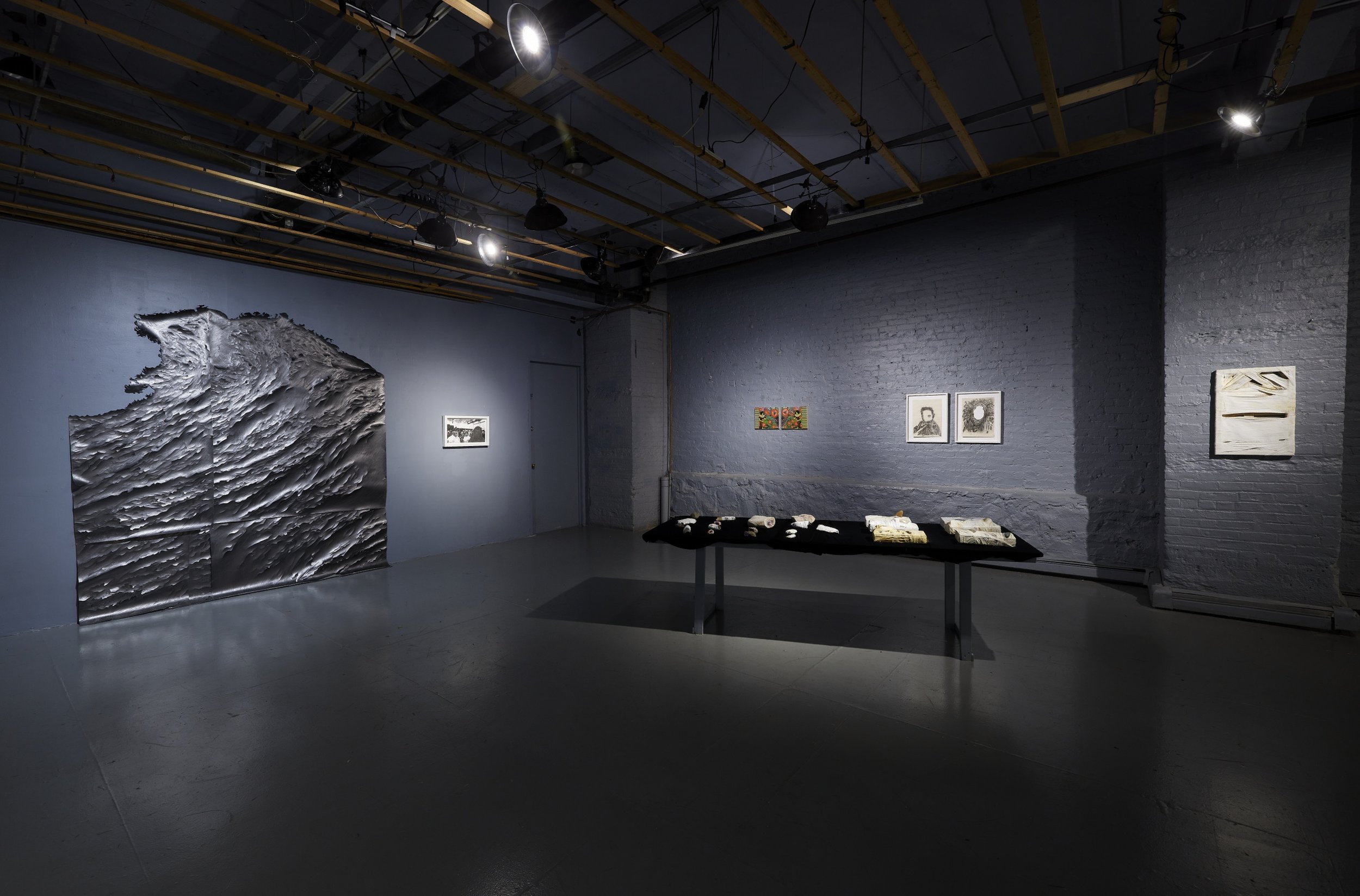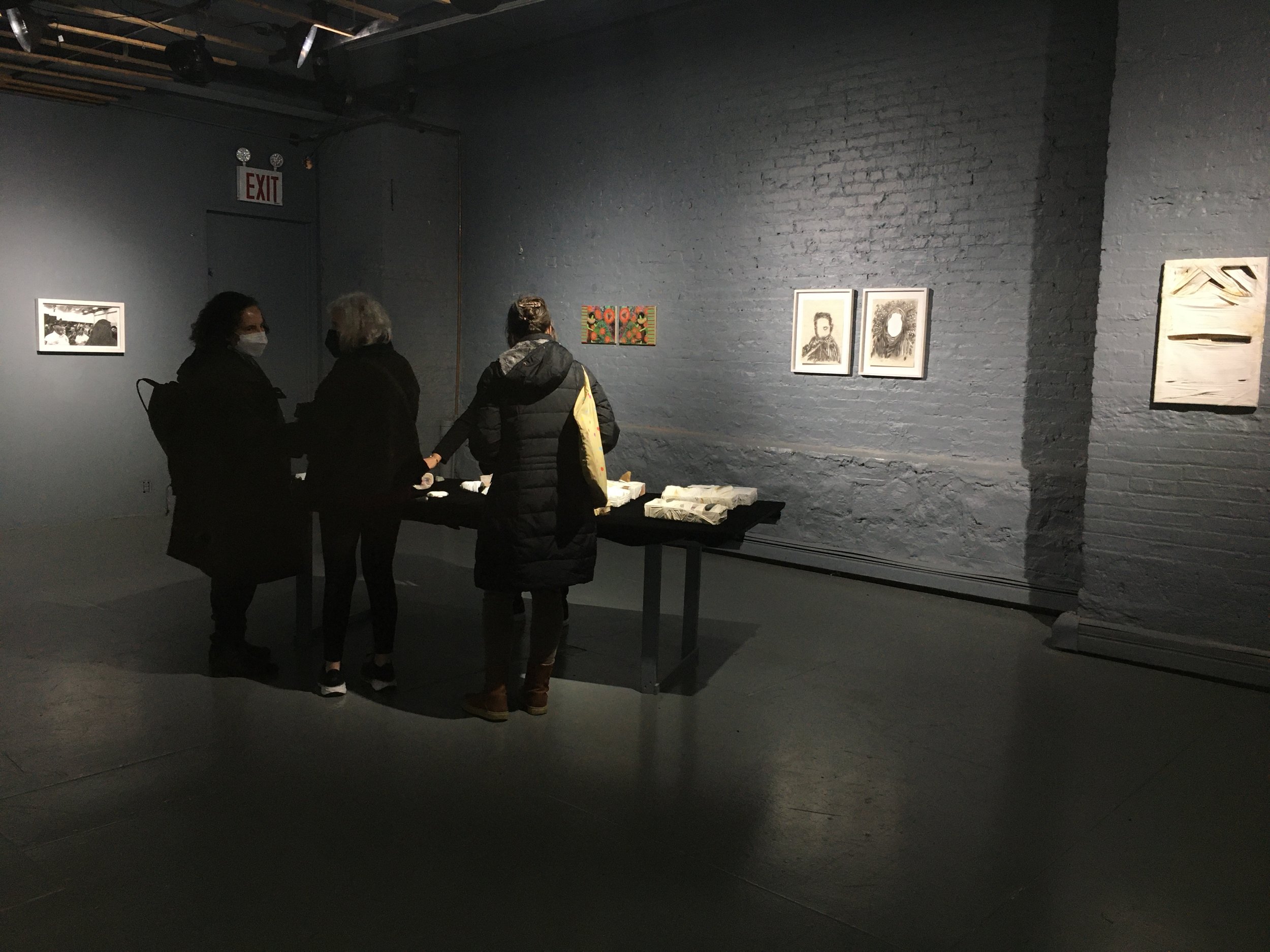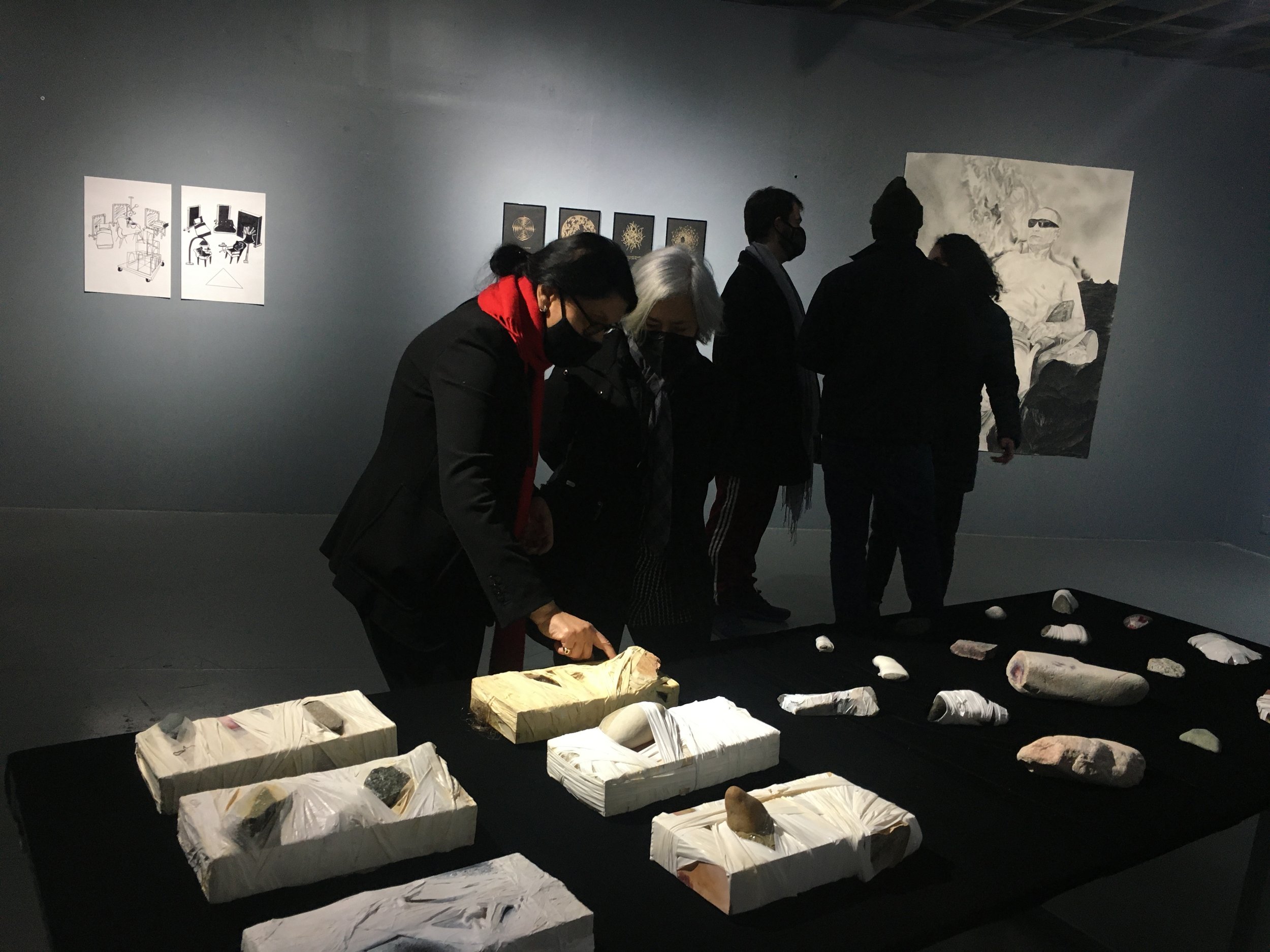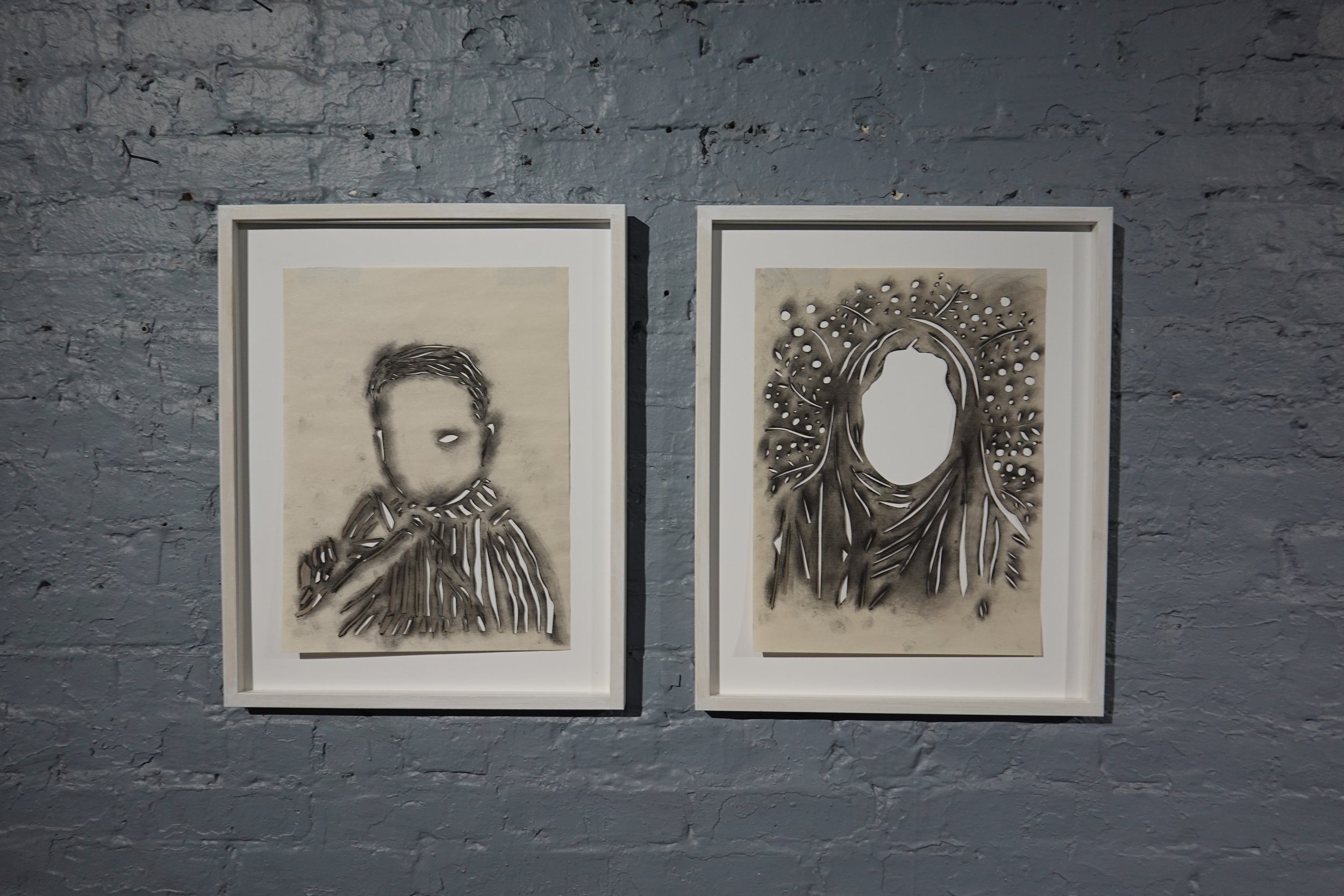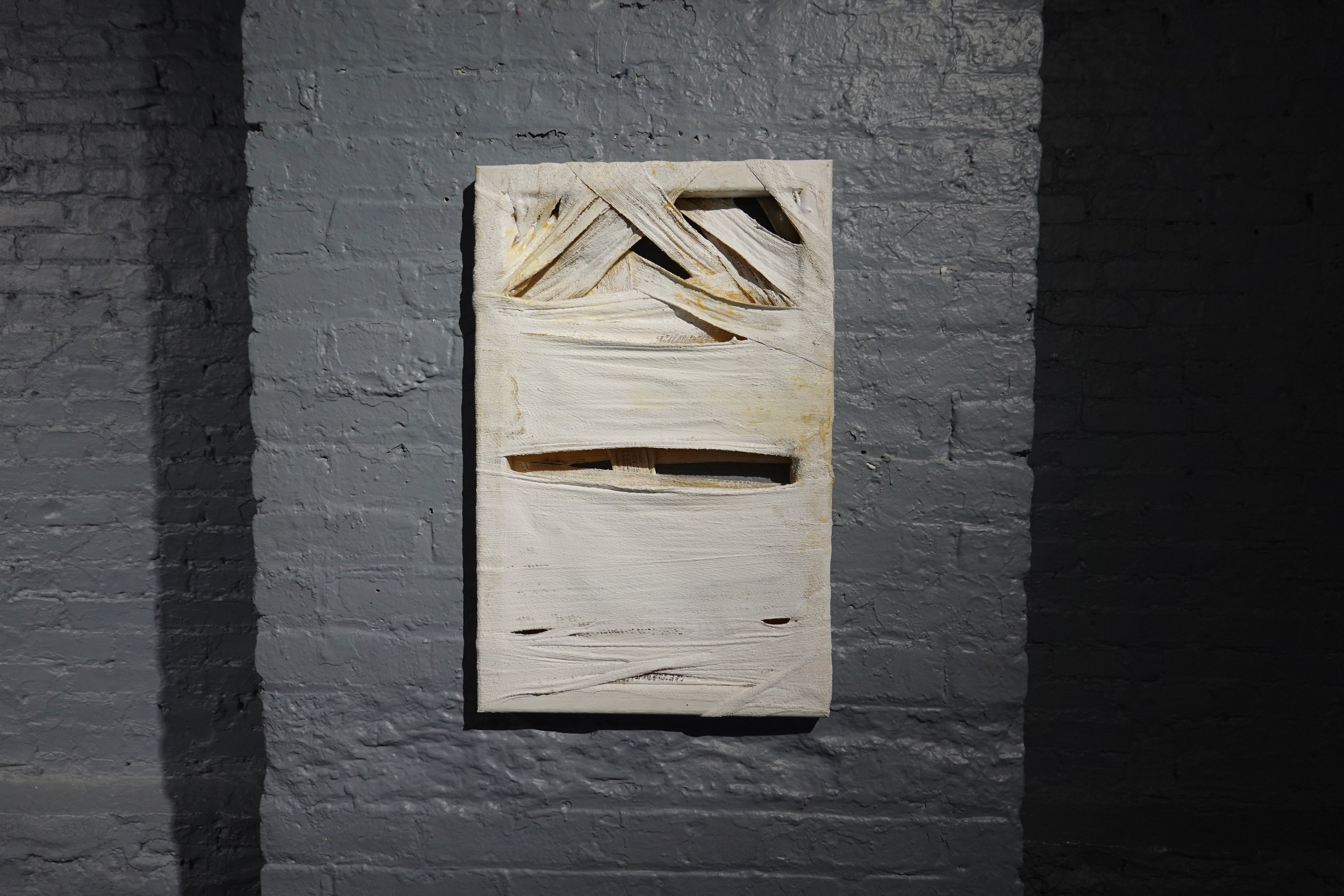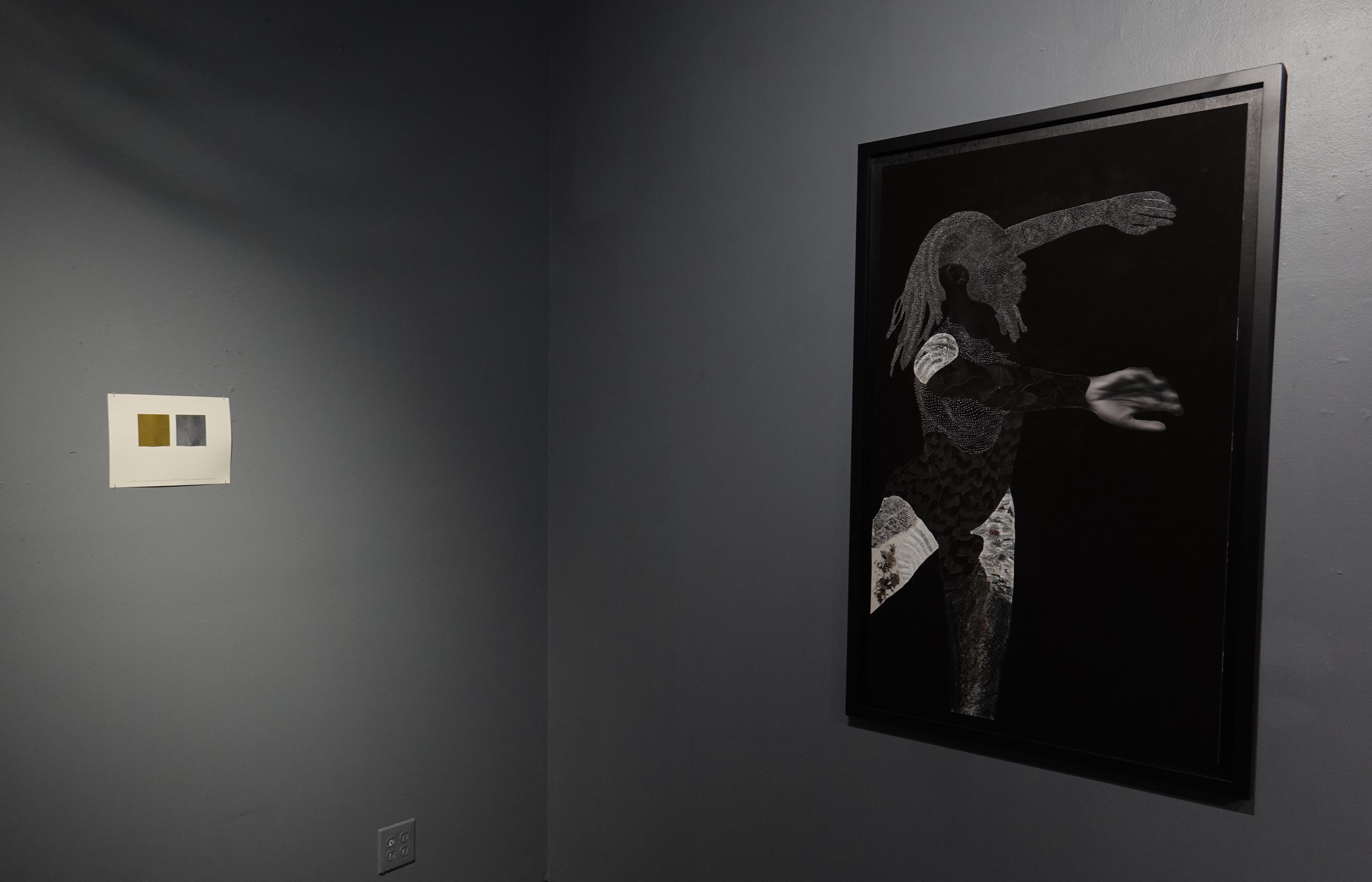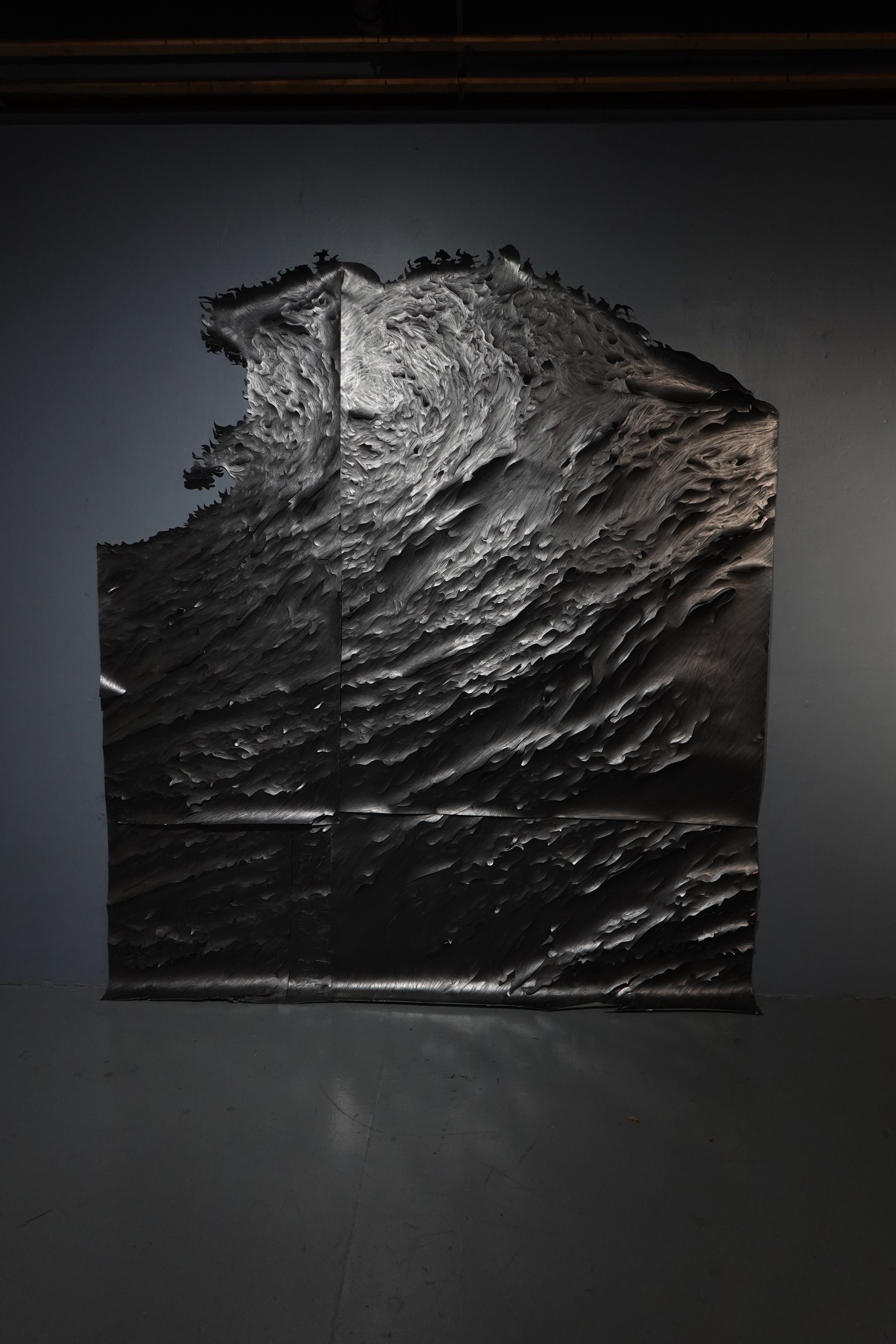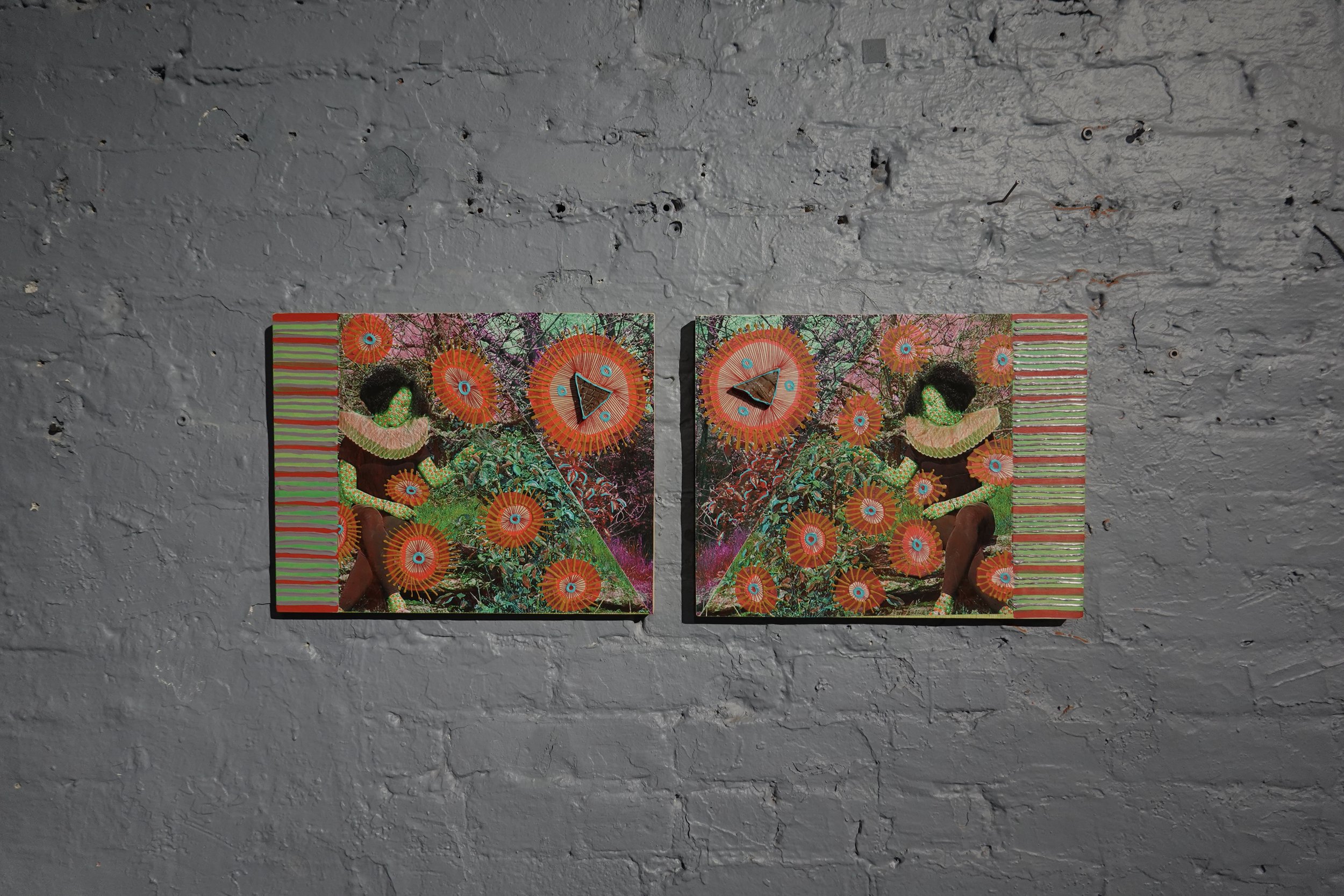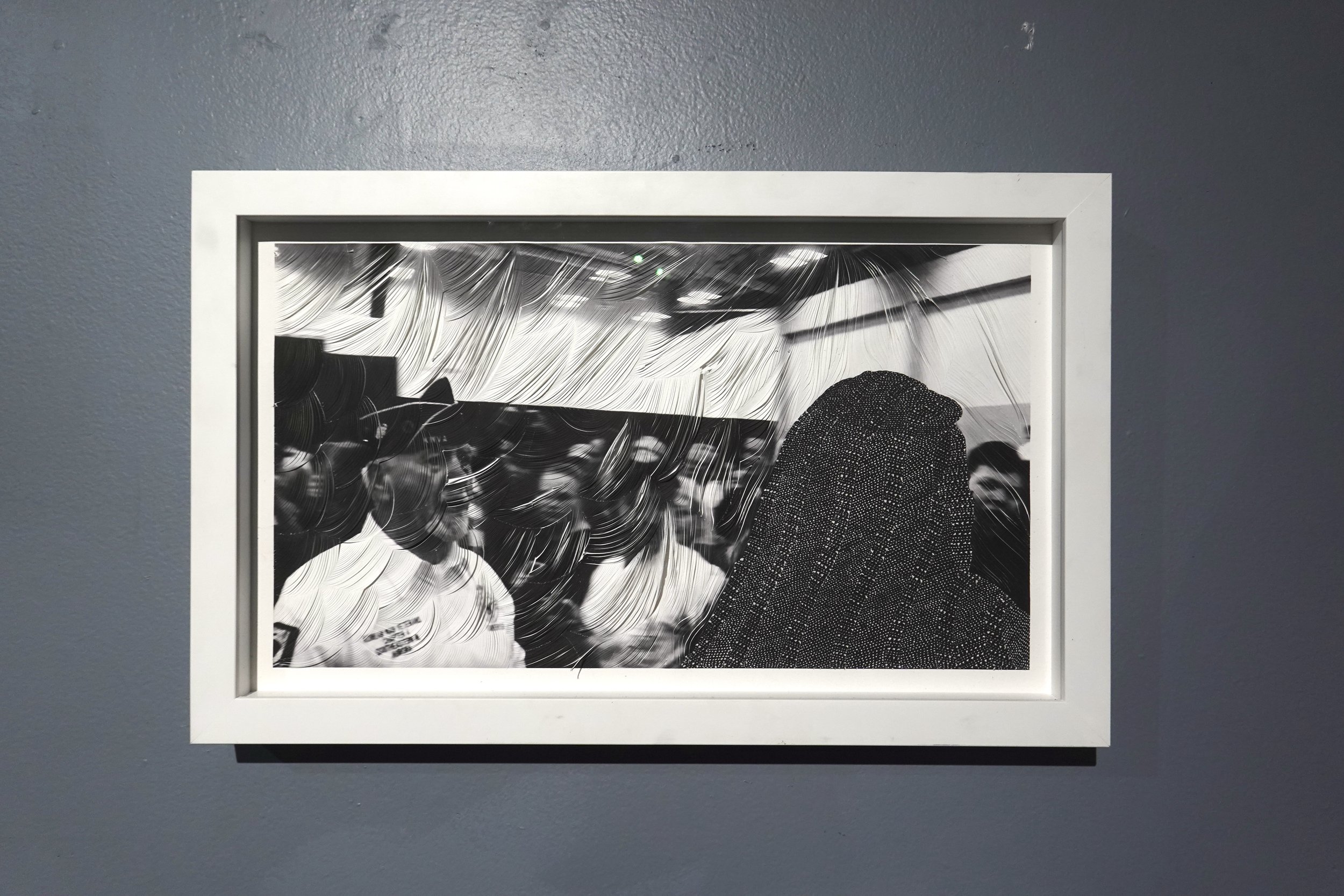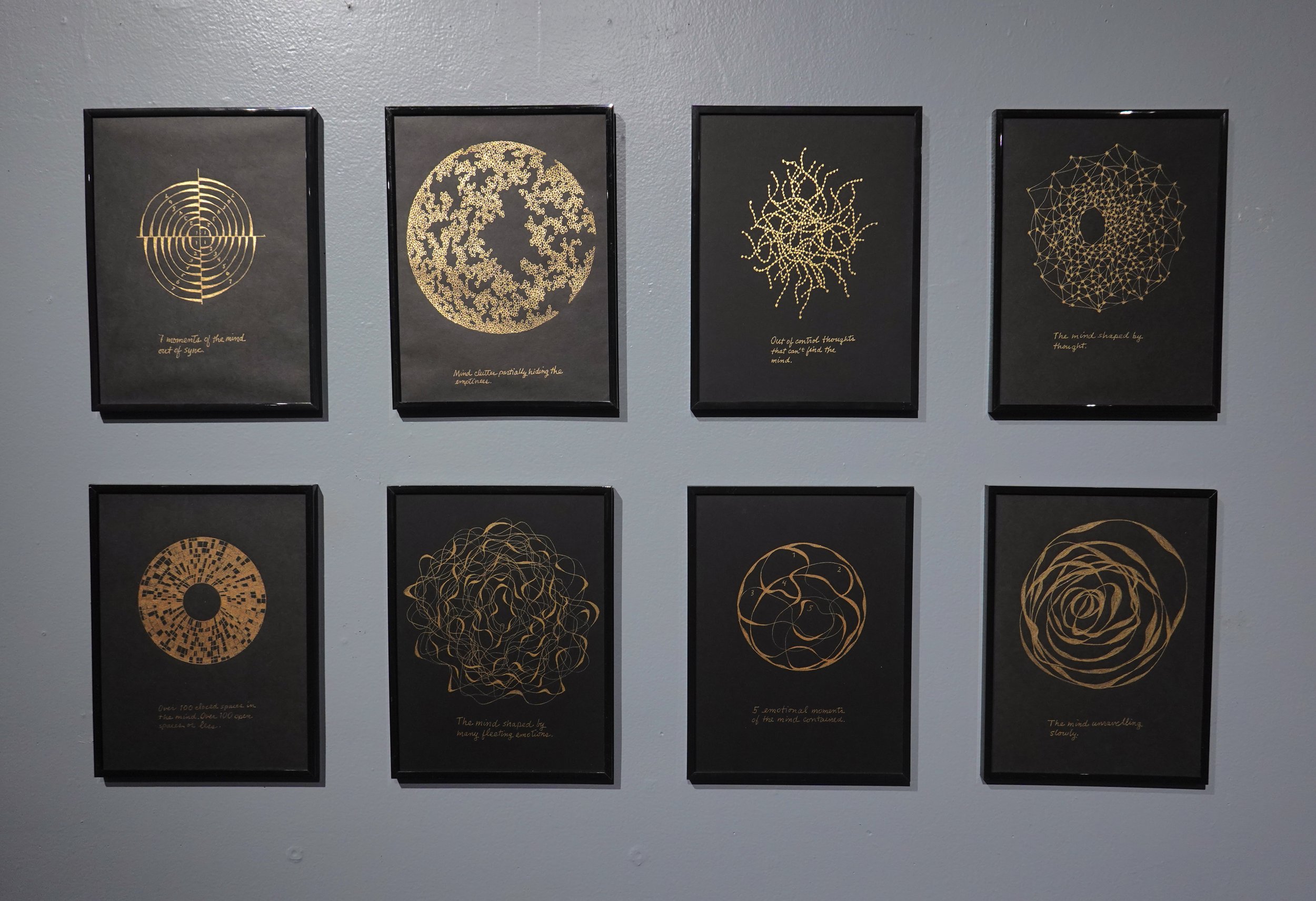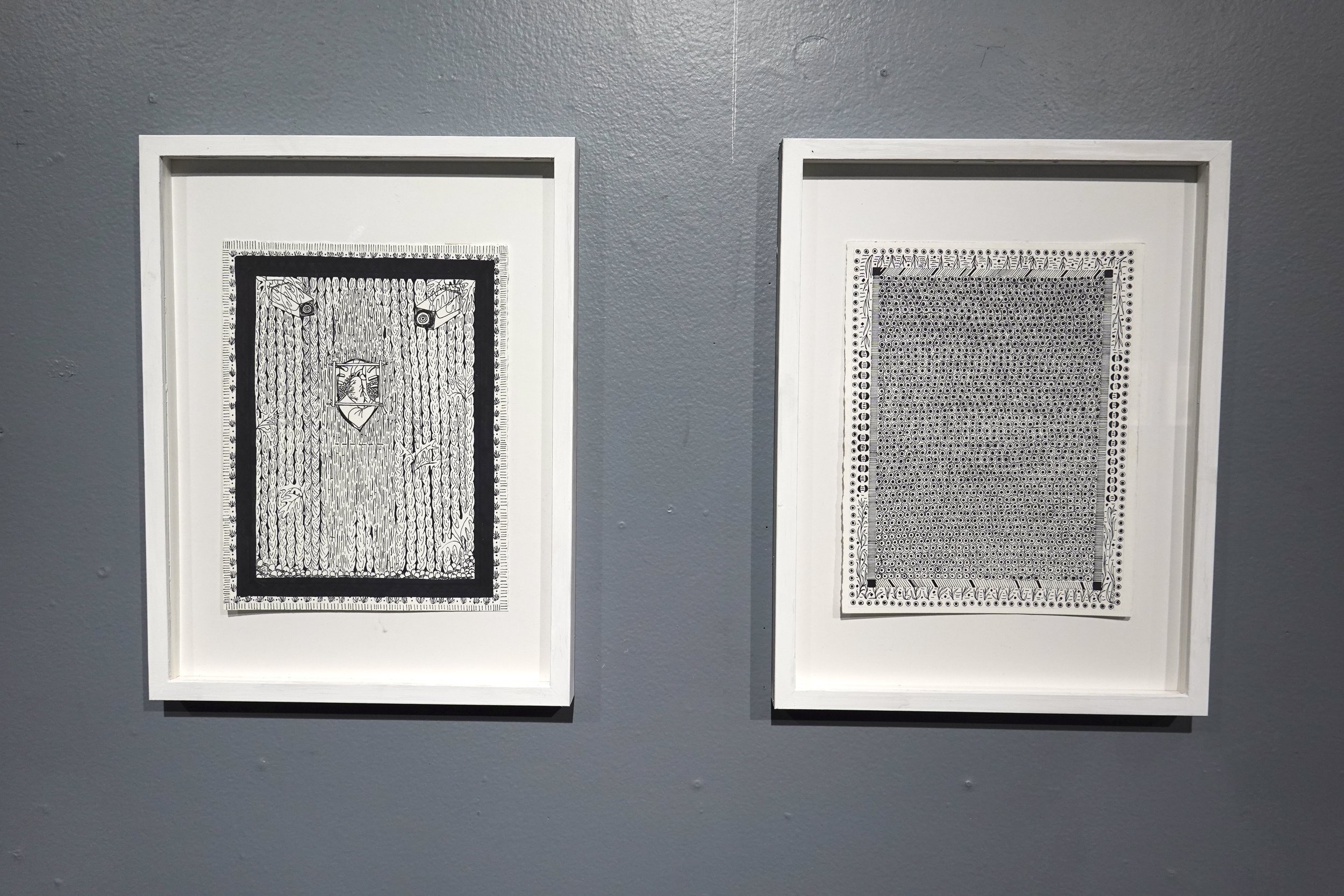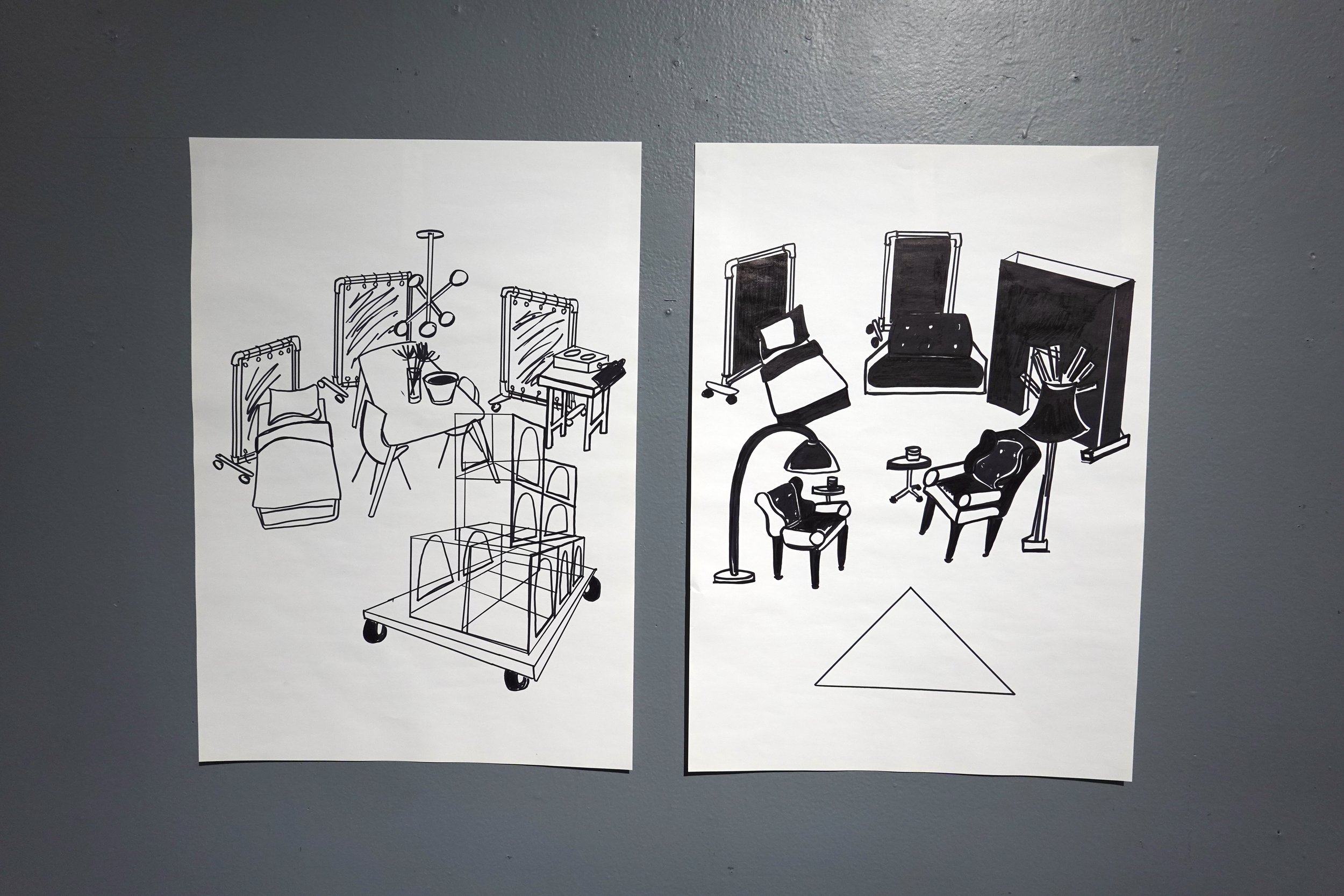NOVEMBER 27 - JANUARY 2, 2022
Opening: Saturday, December 4, 5:30-8pm
DRAWING A LINE
Andrea Alfaro - Roberta Allen - Lucile Bertrand - Crystal Z Campbell - Oasa DuVerney - Ewa Harabasz - Baseera Khan - Nate Lewis - Jelena Prljević - Sa’dia Rehman - Pema Rinzin
Curated by Klaudia Ofwona Draber
The action of drawing a line establishes boundaries, an essential consideration for the artists in the exhibition; whether to protect personal boundaries in the quietude of one's own home, or at the heart of a political conflict. By drawing a line we protect ourselves, our families and our communities from the violence and inequalities that are happening around us. With their drawings the artists are striving for a sense of safety and peacefulness.
From 1973-81, Roberta Allen (b. 1945, US) showed alongside Sol LeWitt, Robert Ryman, Carl Andre, and others at John Weber Gallery in New York. Her conceptual art, combining text and image, has included drawings, collages, artist books, photo/text works, installations, digital prints, and sculpture. 30 one-person and over 100 group exhibitions have taken place in galleries and museums internationally. She has works in the collections of MoMA and The Metropolitan Museum, among many other museum and private collections. Since the early 1970s, she has explored in her conceptual art how language informs or changes our perception of images.
Lucile Bertrand’s (b. 1960, France) work focuses on issues related to the violence of wars and their consequences, migration and inequality in access to the borders, as well as the exploitation of the planet as well as the living. Her creations are characterized by pure lines and an economy of means that nonetheless conceal considerable semantic depth. From everyday tragedies to large-scale catastrophes, her visual metaphors bring forward a subtle and nuanced picture of political and human crises.
Crystal Z Campbell (b. 1980, US) is a multidisciplinary artist, experimental filmmaker, and writer of African American, Filipino, and Chinese descent. Campbell finds complexity in public secrets— fragments of information known by many but untold or unspoken. Recent works revisit questions of immortality and medical ethics with Henrietta Lacks' “immortal” cell line, ponder the role of a political monument and displacement in a Swedish coastal landscape, and salvage a 35mm film from a demolished Black activist theater in Brooklyn as a relic of gentrification. Sonic, material, and archival traces of the witness inform their work in film, performance, installation, sound, painting, and writing.
Oasa DuVerney (b. 1979, US)’s artist statement “If we want to answer correctly, we have to fall back on the idea of collective catharsis. In every society, in every collectivity, exists-must exist-a channel, an outlet through which the forces accumulated in the form of aggression can be released. This is the purpose of games in children's institutions, of psychodramas in group therapy, and in a more general way, of illustrated magazines for children--each type of society, of course, requiring its own specific kind of catharsis. The Tarzan stories, the sagas of twelve-year-old explorers, the adventures of Mickey Mouse, and all those "comic books" serve actually as a release for collective aggression.”—Frantz Fanon
Ewa Harabasz’s (b. 1957, Poland) works in multiple media have been exhibited internationally. Best known for her large-scale drawings and paintings, Harabasz’s work explores trauma, war, race, displacement, domestic abuse, and loss. After studying medicine and art conservation in Poland, she helped restore medieval paintings, icons, and frescoes in churches in Poland and Italy. She then earned a BFA from the College for Creative Studies in Detroit and an MFA at Wayne State University in Detroit. Before joining the Harvard GSD faculty in 2012, Harabasz taught at Cornell University in Ithaca, the University of Michigan in Ann Arbor, and Massachusetts College of Art and Design in Boston.
Baseera Khan’s (b. 1980, US) artist statement: “I collage distinct and often mutually exclusive cultural references to explore the conditions of alienation, displacement, assimilation, and fluidity. Against the backdrop of a crestfallen edge, my work also gestures toward humorous pop cultural references. Using visual legacies of body identities, ritual, and spiritualities I also attempt to reveal volatile subjectivities especially within capitalist-driven social environments such as the United States. Making layers in my work that fit besides, on top, in between, and underneath creates numerous projects that evoke senses of living under surveillance, in suspension, between exile and kinship. I generate installations of concealment, momentary reflections, and sanctuaries. My life's work is dedicated to the development of my own legacy, on my own terms, with the use of fashion, photography, textiles and music, parody, sculpture and performance, I manifest my femme native-born Muslim American experience.”
Nate Lewis’ (b. 1985, US) artist statement: “I am interested in the unseen. My work is driven by empathy, and the desire to understand nuanced points of view. By altering photographs, I aim to challenge people’s perspectives on race and history through distortion and illusion. Treating the paper like an organism itself, I sculpt patterns akin to cellular tissue and anatomical elements, allowing hidden histories and patterns to be uncovered from the photographs. I approach subjects and imagery from a diagnostic place with the idea of utilizing diagnostic lenses and contrast dyes. By virtue of my medical training, I am interested in the tensions that exist within and without us. Ultimately, the work embraces humanistic ideas of human connection and understanding.”
Jelena Prljević (b. 1990, Serbia) is a visual artist from Serbia whose practice exists in the intersection between drawing, animation, and installation. Her works suggest the understanding of fear and the healing process as integral to the resolution of conflict, whether internal or external. A natural storyteller, she builds her narratives through layering of light, erasure, and the regenerative power of shadows. Prljević holds a BFA from the Academy of Arts in Novi Sad, Serbia and an MFA in Studio Art in the Art & Art History Department, School of Fine Arts at the University of Connecticut, USA. In 2019, Prljević's work was presented by Galerie Liusa Wang in Paris (FR). In 2018, along with artists Natasa Prljević and Joshua Nierodzinski, she initiated HEKLER, an artist-run platform and collective that fosters the critical examination of hospitality and conflict through collaborative programming, pedagogy and archiving. Prljević's animated film "Sisterhood" was premiered at 13th AthensAnimFest in Athens (GR), and was officially selected by Queens World Film Festival, New York, NY, USA; ProFiFest 2018, International Film Festival in Prokuplje (SR); SEE a Paris 2018, South East European Film Festival in Paris (FR); Balkanima 2018, European Animated Film Festival in Belgrade (SR). During this period she participated in many national and international group exhibitions and collaborative projects. She is a recipient of several awards for painting, drawing, and pedagogy, including The Elizabeth Greenshields Foundation Grant Award (2017). Currently, she lives and works in her village Ljubanje, Serbia.
Sa’dia Rehman (b. US) explores how contemporary and historical images communicate, consolidate and contest ideas about race, empire and labor. Through techniques such as wall drawing, cut outs and assemblage, Rehman pulls apart and puts together images from family photographs, historical records, and mass media to interrogate their resonances.
Pema Rinzin (b. 1966 in Tibet) grew up in India, and in his youth studied in TCV School. Later studied with Master Artist Khepa Gonpo, and Kalsang Oshoe, Rigdzin Paljor, master artists from 1979 to 1983. Rinzin subsequently taught Renaissance, Impressionist and Abstract Expressionist art, as well as cartoon drawing for eight years at the Tibetan Children’s Village School (TCV) in Dharamsala. From 1995 to 2004, as artist-in-residence and taught at the Shoko-ji Cultural Research Institute in Nagano, Japan. From 2002 to 2005, he divided his time between Japan and Wurzburg, Germany, where he was an artist-in-residence at the Brush & Color Studio. From November 2005 to October 2008, Rinzin was an artist-in-residence at the Rubin Museum of Art in New York. His paintings have been exhibited internationally and are held in public and private collections worldwide, most notably at the Shoko-ji Cultural Research Institute in Nagano, Japan, and the Rubin Museum of Art. Pema Rinzin lives in Brooklyn, New York, where he founded the New York Tibetan Art Studio. Presently represented by Joshua Liner Gallery, Chelsea New York.
Andrea Alfaro Rizek’s work is a visual journal, a display of the essence of her surroundings. Journaling has been the constant medium of expression throughout her travelling. Starting her career in Dominican Republic where she studied at Altos de Chavón school of art and design and had her first exhibitions. Moving then to Puerto Rico, where she got involved with street art and murals getting commissioned work in restaurants, bars, homes and an Aaron Stewart project. It was also in Puerto Rico were Andrea started tattooing her designs and had her first solo show. Nine months in Brooklyn, NY, gifted the artist with a good deal of inspiration and the opportunity of a mural at 787, a coffee shop in East Village. And currently the artist is nesting in Egypt. Andrea's work seems to be alive, almost as if someone could immerse oneself in a specific moment of her life or interact with her characters. The witty language that fluctuates according to her mood is inspired in Frida Kahlo's vulnerability. Egon Schiele's drawing line and many contemporary artists are also the ingredients to Andrea's style. Her mediums to express vary according to what and where she is creating, playing with watercolor, acrylics, ink, collage, paper, wood, recycled materials and trash. To see more of Andrea's work, you can follow her Instagram account @holmiga
GALLERY HOURS:
Thursday - Sunday, 1 - 6pm, or by appointment. Please email hanne@fivemyles.org, or call 718-783-4438.
DIRECTIONS:
Take 2, 3, or 4 trains to Franklin Avenue. Walk two blocks against the traffic on Franklin. Walk ¾ block to 558 St. Johns Place. FiveMyles is within easy walking distance from the Brooklyn Museum.
ACKNOWLEDGEMENTS:
FiveMyles is in part supported by the New York State Council for the Arts, Public Funds from the New York City Dept. of Cultural Affairs in partnership with the City Council, Council Member Laurie Cumbo, The Jacques and Natasha Gelman Foundation, the Shelley and Donald Rubin Foundation, the Perlemeter Foundation, the Andy Warhol Foundation for the Visual Arts, the Joseph Robert Foundation, and the William Talbott Hillman Foundation.

